Vega rocket set for maiden voyage
- Published
- comments
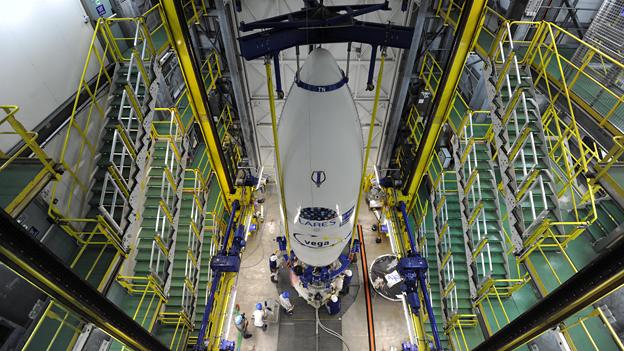
Esa's Vega programme represents an investment of more than one billion euros
Europe's Vega rocket is finally set to make its maiden flight on Monday.
The 30m-tall vehicle, first conceived in the 1990s, will launch on what is termed a qualification flight from the Kourou spaceport in French Guiana.
It will carry nine satellites into orbit but the object of the mission is really to prove the rocket's systems all work as designed.
Vega, external has been developed to assure European access to space for payload classes weighing less than 2.5 tonnes.
At the moment, these smaller satellites tend to ride converted Russian ICBMs to get into orbit and they can sometimes wait many months to get a launch slot.
Vega should allow European operators to have more control over the schedules of their space projects. It also means that the value of what it is an immensely high-tech enterprise will return to the European economy, not to foreign industry.
"Vega gives Europe the ability to launch small satellites," said Jean-Jacques Dordain, director general of the European Space Agency (Esa).
"New technologies - and in particular the miniaturisation of technologies - are making for more and more small satellites. This is particularly true of scientific satellites such as Earth observation spacecraft. So, Vega has a fantastic perspective in front of it provided we succeed," he told me.
The launch in French Guiana, external is scheduled to take place between 10:00 and 12:00 GMT.
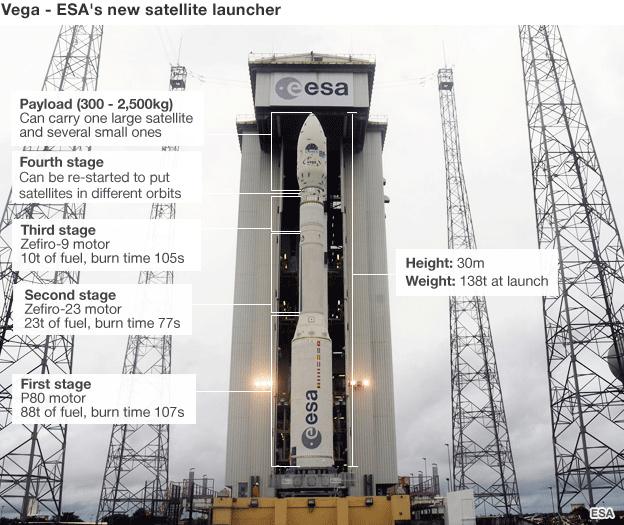
Vega will lift off from a refurbished pad formerly used by the Ariane 1
Its four stages and satellite payload are assembled on the launch site
Satellites will weigh from a few 10s of kg up to a maximum of 2,500kg
The "reference mission" is a 1.5t satellite in a 700km-high polar orbit
There will inevitably be a degree of nervousness in launch control at Kourou come lift-off time. According to statistics compiled by the Ascend aerospace consultancy, external, 58% (11 out of 19) of new rockets since 1990 have experienced a major anomaly on their first flight.
It is for this reason that the satellites carried on Vega's maiden voyage have all been given a "free ride".
Stefano Bianchi, Esa's Vega programme manager, explained: "Of course, we understand more about [the way rockets perform today] - we have more modellisation capability, computers, etc, but it is clear that at system level you have things you cannot test on the ground. And you have to rely on the first flight.
"You do all the verification, you take all of the margins on what is unknown, but still the first flight is always a test."
Vega is a four-stage vehicle. Its first three segments burn a solid fuel. Its fourth and final stage uses liquid propellants and can be stopped and restarted several times to get a spacecraft into just the right orbit. The stage can also bring itself out of the sky - something deemed very important these days given the rising concern over space debris.
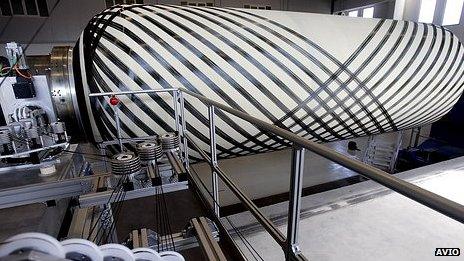
New manufacturing techniques used on the Vega stages are designed to reduce cost and improve performance
A significant innovation is the way the motor cases are prepared for the first three stages employing a high-strength graphite fibre and epoxy resin.
Avio, the Italian aerospace manufacturer at the heart of the Vega project, has set up a facility where filaments of this material can be wound into the desired shape.
"The use of carbon fibre is very important and allows us to reduce cost and improve performance, because there is less weight in that ratio between the frame and the fuel," said Avio, external CEO Francesco Caio.
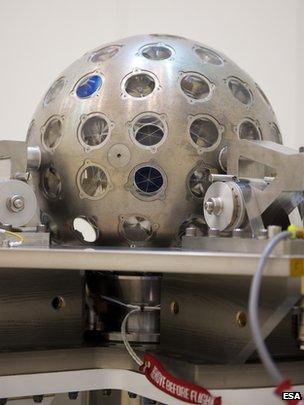
Free ride: The scientific payloads on the first flight have not had to pay any launch fees
"At the moment, we're talking about a cost of 22 million to 25 million euros for the launcher before you add in the launching costs. It is difficult to gauge how things will evolve - and it is likely to be a function of volume and overall organisation of industry and the value chain in Europe - but frankly I certainly think there is potential to drive costs down further," he told me.
Esa expects an operational Vega to be launching about twice a year, carrying mostly small scientific and government satellites.
Vega will take its place alongside its "big brother" at Kourou - the Ariane 5 heavy-lift rocket, and the new medium-lift "Europeanised" Soyuz rocket that has only recently started launching from the spaceport.
With all three vehicles, Arianespace, the company that runs Kourou, will now be able to offer satellite operators a ride for any type of spacecraft to all kinds of orbit - from the low, pole-crossing orbits used by Earth observation missions, to the high, geostationary locations favoured by big telecommunications platforms.
Preparation for the launch has been pushing right up against the end of the available time window.
If Vega should need to delay its flight through this coming week because of technical concerns, it is highly likely it will be asked to stand down for a month or so.
An Ariane 5 rocket has been booked to launch Europe's third ATV cargo ship to the International Space Station (ISS) on 9 March and this mission takes precedence over all other activity at Kourou.
The frequent comings and goings at the station require a carefully co-ordinated traffic schedule and this cannot be disrupted for Vega's introduction - as important as it is.
- Published9 January 2012
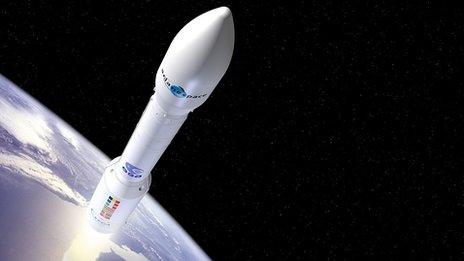
- Published18 October 2011
- Published25 June 2011
- Published18 March 2011